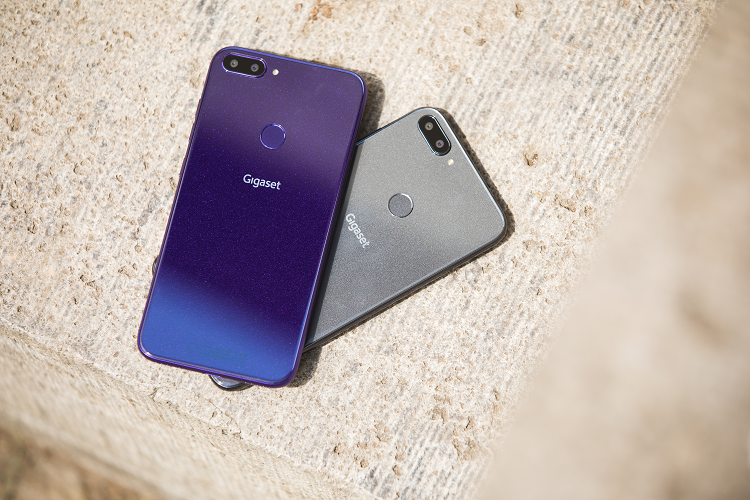 Source: iStock.com/rclassenlayouts
Source: iStock.com/rclassenlayouts
The art of folding … doesn’t always work
26. August 2019 Published by Raphael Doerr“Oru” is Japanese for “to fold” and “kami” means paper – and the term “origami” is a compound of the two that denotes the ancient art of paper folding. This traditional form of Japanese art involves folding square paper into two- or three-dimensional objects without using scissors or glue. Yet it’s anything but easy, and masters of the craft don’t grow on trees. The smartphone industry is also realizing that. The new product being hyped is the “foldable phone.” So it’s time to delve deeper into this subject.
Does the future lie in folding?
Yes, if we’re to believe the technology pundits – and especially in the smartphone arena. But there’s folding and there’s folding. After all, modern smartphones aren’t made of paper, which makes them pretty unsuitable for traditional origami. Perhaps “collapsing” gets closer, but that doesn’t sound as sexy as “folding” and, besides, we already had that back in the 1990s. Yet that shows where things are heading. If mobile phones are collapsible, to save space, and can then be opened out into a tablet, that’s just the first step toward the foldable future.
However, whether a device is folded, collapsed or bent – the display is the crux. While Samsung Galaxy Fold has a display that folds inward and uses a second one for smartphone mode, the manufacturer Xiaomi, for example, uses a double-folding technique. The device is folded outward, in other words, flipped up, and flipped shut on the left and right sides so that the display is on the outside and surrounds the phone completely. The Huawei Mate X with its new foldable design is representative of a new era of communicative interaction. The foldable 5G phone from the Chinese manufacturer is folded outward, in other words, flipped up.
What’s behind the folds?
“Every form of the bendable or foldable display has its origins in OLED technology. Unlike conventional LEDs, these screens no longer depend on the light from panels; instead, each pixel is its own light source. That not only makes them more flexible, but also ensures greater contrast and a lusher black. One problem that has been resolved in the past ten years, at least in part, is stability. Unlike rigid smartphones, flexible tablets and phones can’t be made from rugged Gorilla Glass,” wrote the online magazine Ingenieur.de at the end of 2018. [1] And the stability and quality of the foldable display is still a big problem, as the example of the Samsung Galaxy Fold shows. “Some of the foldable OLED displays exhibited serious flaws after just a few hours. The organic screens in the €2009 smartphone flickered, had faulty pixels or even stopped working completely.” [2]
Collapsing, folding or bending
Yet the concept of folding is not really new. Back in 2013 Samsung presented Foldiplay, a concept where a display could be folded multiple times.
Yet the new foldable offensive is coming at the right time, say the experts. The market for smartphones is stagnating, albeit it at a high level. Although Samsung, the market leader, is still chalking up growth of five percent in terms of the number of smartphones sold, experts predict that demand for smartphones is largely saturated. Global demand fell by two percent from January to March 2018. By way of comparison: “At the start of the smartphone boom, when mobile devices were still new, Samsung experienced triple-digit percentage growth,” according to Martin Börner, Deputy President at Samsung Electronics.
A stagnating market
The top brands will suffer a drop of almost four percent, according to a report by the German newspaper Frankfurter Allgemeine Zeitung (FAZ). “The market research and consulting firm Gartner forecast that 2019 will see the worst sales trend ever for mobile devices, with 1.75 billion mobile phones likely to be sold. Around 90 percent of them are smartphones … That means the top three manufacturers in the industry – Samsung, Huawei and Apple – will suffer a drop of almost four percent.”[3]
There are a variety of reasons for the end of the boom. Customers aren’t given any perceptible new utility value and hence any new dimension of efficiency or experience. The customary practice of updating models is becoming worn and there’s no longer any ‘aha’ experience. So what’s the reason to buy a new model? The upshot: The existing model isn’t replaced as soon and so is used longer.
Gartner’s Research Director Ranjit Atwal puts it in a nutshell when he notes that, when new top devices are presented, many customers increasingly mock the fact that the new smartphones hardly differ from their predecessor and the technical innovations from one model version to the next are modest.
New promises, new luck
That’s now to change with the new foldable smartphones – both in terms of look and feel. A new design, new technologies in them, more cameras and, and, and … Huawei has invested three years of development work and 1 billion US dollars in R&D expenditure on its new top model. Unlike Samsung, which has fitted the Galaxy Fold with three displays, Huawei is relying on one display that measures 8 inches when fully opened out, making it almost the size of an Apple iPad mini 4 (7.9 inches). When the Mate X is folded shut again, the front is still a huge 6.6 inches, hence larger than an iPhone XS Max (6.5 inches). Yet despite all its innovativeness, the world’s first foldable mobile phone – which was premiered at CES at the beginning of January 2019 – exhibited visible signs of wear, especially where it was subject to stress, after just two days of the trade fair, according to the German magazine Computerbild.
Even though foldable smartphones make hearts beat faster and spur the imagination in the technology world, the euphoria in the industry has been dampened for the time being. Samsung has postponed the launch of the Galaxy Fold due to technical problems. One of the reasons for that is its new folding mechanism: The smartphone’s display is bent and that is still causing headaches when it comes to stability and quality. Designing a smartphone with a foldable display seems to be a greater challenge for some manufacturers.
Does innovation come at a price?
The world’s first folding mobile phone was the MicroTAC 9800X, which Motorola launched in 1989. “The relatively space-saving design was enabled by a flip piece that you opened out to speak and closed when you weren’t using it. The Motorola MicroTAC thus became the first-ever folding mobile phone,” writes the German computer magazine PC Welt.[4] The press focused in particular on the advantage that it could be put in trouser pockets: “Motorola Has a Pocket-Size Cellular Phone,” as the Los Angeles Times wrote. The display was able to folded and rotated without any damage to it or impairment to the image quality. This innovative device retailed in 1989 at an incredible 2,995 US dollars. Which shows us that innovation has always come at a price. Almost 30 years later, the price tag for Huawei’s new top model is around €2,300, while the Samsung Galaxy Fold costs €2,000. Whether customers are willing to pay that much remains to be seen. Especially since there is some uncertainty about their workmanship and so their quality – which wasn’t the case with the first folding phone from Motorola.
Here’s a brief digression to the year 1989. On April 26, the Los Angeles Times ran a report on Motorola headed “Motorola Has a Pocket-Size Cellular Phone”
“Motorola Inc. introduced a dramatically smaller cellular telephone hat can be carried in a purse or coat pocket. The device, half the size of any other portable cellular model, is about as wide and long as a checkbook. It is about as thick as a fat wallet at the earpiece while tapering down to half the thickness of a deck of cards at the mouthpiece. The phone has a shorter-than-usual battery life. The 10.7-ounce model has a 30-minute rechargeable battery, while the 12.3-ounce one has a 75-minute battery. It needs no wires or base to operate. The device, called the Micro Tac Personal Telephone, is expected to retail for $2,995.”
What do we learn from that? Innovation has always come at a price!
Skepticism is called for
The analyst Anshul Gupta from the market research firm Gartner doesn’t expect the foldable phone to boost smartphone business in the short term. “People buying a smartphone just because a new technology is available is no longer how the market works.” He adds that there are still many unresolved questions: “Are these devices, when unfolded, really on a par with a tablet? And how good are they as a smartphone when folded?”[5] A recent report states that sales figures for smartphones with a foldable display will remain low and not capture a visible share of the overall market until 2023. “Specifically, the experts assume that the technology could introduce new innovations and so inject new impetus into the difficult business of smartphones, but technology-related compromises have a negative impact on initial adaptation. One aspect particularly emphasized in this regard is that the display may be prone to scratches in everyday use.”[6]
The price must be right
It’s not expected that companies will make big bucks from the extremely expensive foldable phones. And customers no longer fork out so much for new smartphones. Owners are waiting longer and longer before buying a new device. The average price customers paid for a new smartphone in Germany last year was around €489, according to calculations by the industry association gfu. The study reveals that only seven percent were willing to pay more than €800 for a new phone.
Smartphones “Made in Germany”

So, does innovation come at a price, as in the case of Motorola? Not necessarily. The smartphone models GS185, GS195 and GS280 prove otherwise, at any rate. They are the first and only smartphones to be made in Germany to date – by Gigaset.
Anyone familiar with the models’ price points (between €200 and €250) will realize that quality and innovation do not always have to come at a price that customers are reluctant to pay.
To find out more, simply click here.
 Comments
Comments

 en
en 







